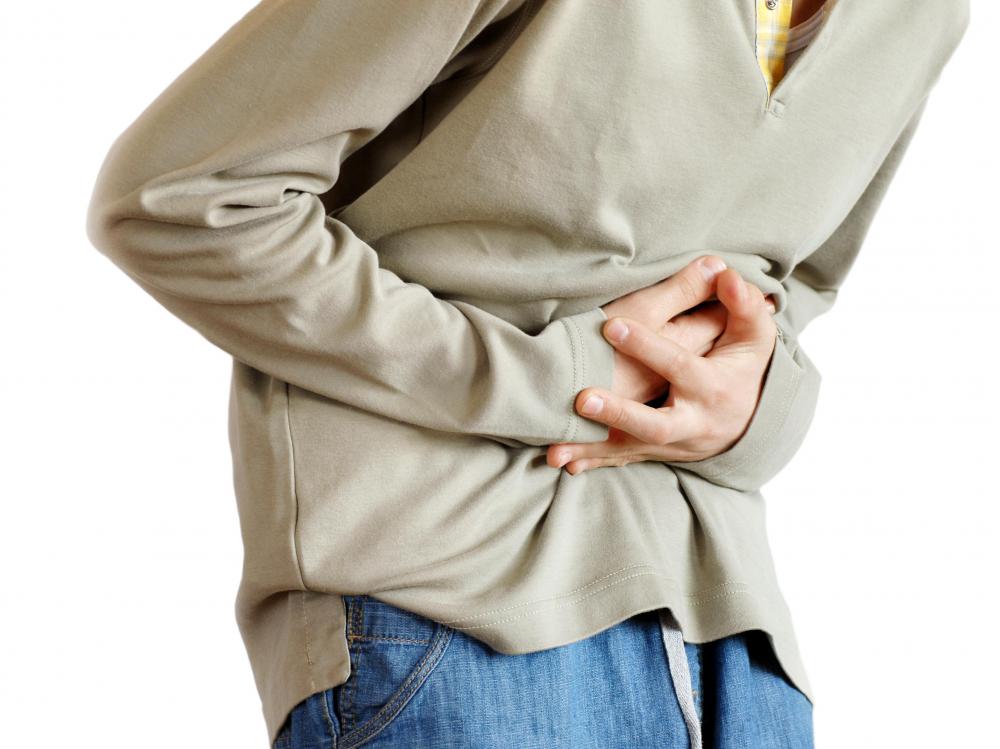At WiseGEEK, we're committed to delivering accurate, trustworthy information. Our expert-authored content is rigorously fact-checked and sourced from credible authorities. Discover how we uphold the highest standards in providing you with reliable knowledge.
What Are the Symptoms of Salmonellosis?
Salmonellosis occurs when an individual develops a bacterial infection as a result of eating contaminated meat or poultry. Diarrhea in varying degrees of severity is usually the first sign that something is wrong. It can also be accompanied by stomach pains and a fever.
The illness is caused by the ingestion of salmonella bacteria, usually from improperly cooked poultry or eggs. These are not the only foods that can cause a salmonella infection, however, and even certain vegetables can contain the bacteria. As there are a number of different sources for the bacteria, whether or not the individual has recently eaten a specific type of food can help to diagnose the condition. If symptoms develop after eating foods containing raw eggs or chicken that was not cooked to the proper temperature, salmonellosis is a likely diagnosis.

Gastrointestinal distress is usually the first of the symptoms of salmonellosis to develop, along with stomach cramps and abdominal pain. It can take up to three days for the first symptoms to begin to manifest themselves, as it begins when the bacteria infect and spread throughout the small intestine. These bacteria interfere with the way food is processed and disposed of, so diarrhea is one of the most common symptoms of salmonellosis.

Depending on the individual, the symptoms of salmonellosis may last anywhere up to a week. During this time, it is important to drink extra fluids in order to keep hydrated. The diarrhea may not be severe and may last only a few days, but it can cause the individual to become dehydrated and put added strain on the body.
Other symptoms of salmonellosis can develop alongside the diarrhea. There may be cases of flu-like symptoms, such as alternating fever and chills, along with tenderness throughout the muscles of the abdomen. Additional forms of gastrointestinal distress can accompany the diarrhea, including vomiting. There may be an overall feeling of weakness and constant nausea. Body aches and fatigue may also be present through the course of the infection as a symptom and as a consequence of the symptoms.

The development of a fever and severe stomach cramps can make the infection even more painful. Most cases are not severe enough that professional medical attention is required; if the symptoms of salmonellosis last for more than a week, it is possible that the bacterial infection has spread outside the digestive tract. In this case, medical attention should be sought. Most medical professionals will put the individual on a course of antibiotics in order to help the body's defenses fight off the infection.
AS FEATURED ON:
AS FEATURED ON:














Discuss this Article
Post your comments